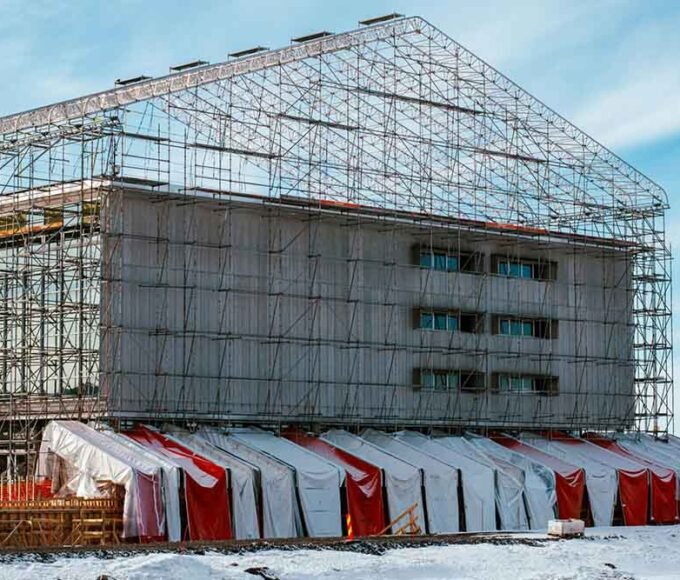When embarking on a construction or remodeling project, one of the most critical aspects is the ability to visualize the final outcome through a room planner. Traditionally, this process relied heavily on two-dimensional blueprints and technical drawings, which often failed to provide a comprehensive understanding of the project. However, with the advent of floor plan design software, professionals in the construction and remodeling industry now have access to a powerful tool that significantly enhances visualization.
Optimizes Available Space and Ensures Effective Room Layouts
Space planning is a crucial element in any construction or remodeling project. It involves determining the most efficient way to utilize the available space while considering functionality, aesthetics, and practicality. With floor plan software, professionals can easily experiment with different room layouts and configurations. This software allows for quick adjustments and revisions, enabling designers to find the most efficient use of space without the need for manual calculations or time-consuming physical rearrangements.
Facilitates Clear and Concise Communication
Clear and effective communication is essential for the success of any construction or remodeling project. Floor plan design software acts as a common platform for architects, designers, contractors, and clients to collaborate and share ideas. With the software’s visual representation of the project, stakeholders can easily convey their thoughts, suggestions, and requirements. This streamlined communication process minimizes misunderstandings and ensures that everyone is on the same page, resulting in a smoother and more successful project execution.
Promotes Collaborative Work
Collaboration is a key factor in the construction and remodeling industry. Floor plan design also allows multiple professionals to work together seamlessly, sharing their expertise and making real-time modifications to the floor plans. This collaborative environment fosters better coordination and minimizes errors. Architects can work closely with designers to refine the aesthetics, while contractors can provide valuable input on the practicality and feasibility of the design. The software acts as a central hub where ideas converge, resulting in a more refined and well-coordinated project.
Reducing Time and Costs
Before the advent of floor plan design software, professionals relied on manual drafting techniques, which were time-consuming and prone to errors. Any changes or revisions required starting from scratch, leading to further delays and increased costs. With software, floor plans can be created, modified, and revised with a few clicks, significantly reducing the time and effort required. Additionally, the ability to make real-time changes and visualize the impact on the overall project allows for quicker decision-making, avoiding costly mistakes.
Allows Easy Experimentation
Design flexibility is a crucial aspect of construction and remodeling projects. Floor plan design software provides the freedom to experiment with various design options and iterations. Designers can explore different layouts, materials, and architectural features without the need for physical prototypes. This flexibility allows for creative exploration and the ability to cater to diverse client preferences. Designers can present multiple design options to clients, empowering them to make informed decisions based on realistic visualizations.
Provides Accurate Measurements
Precision is paramount in construction and remodeling projects. Floor plan design software offers accurate measurements and dimensions, ensuring that every element of the design aligns with the available space. This level of accuracy is particularly crucial when estimating materials and ordering supplies. With precise measurements, professionals can avoid wastage and optimize the use of resources, resulting in cost savings and improved project efficiency.
Enables the Creation of 3D Models
One of the most significant advantages of floor plan design software is its ability to create realistic 3D models. These models provide clients with a comprehensive visualization of the final project, allowing them to better understand the design and make informed decisions. Clients can virtually walk through their future space, observing the aesthetics, flow, and functionality. This visualization eliminates ambiguity and helps clients develop a clear vision, reducing the chances of dissatisfaction or unexpected surprises later in the project.
Allows Customization of Floor Plans
Every client has unique requirements and preferences when it comes to their construction or remodeling project. Floor plan design software enables designers to customize floor plans to meet these specific needs. Whether it’s incorporating special features, adjusting room sizes, or considering accessibility requirements, the software allows for easy modifications. Designers can collaborate with clients to tailor the floor plan to their exact specifications, resulting in a highly personalized and satisfactory outcome.
Wrapping Up
Floor plan design software goes beyond visualization and customization. It also facilitates simulations and analysis for crucial factors like lighting, airflow, and structural integrity. Designers can simulate different lighting scenarios to determine the most suitable placement of windows and artificial lighting sources. They can analyze airflow patterns to ensure proper ventilation and thermal comfort. Structural integrity can be assessed through simulations, helping to identify potential weak points and optimize the design for safety and durability. These simulations and analyses lead to optimized designs that meet functional requirements while maximizing efficiency and sustainability.
















